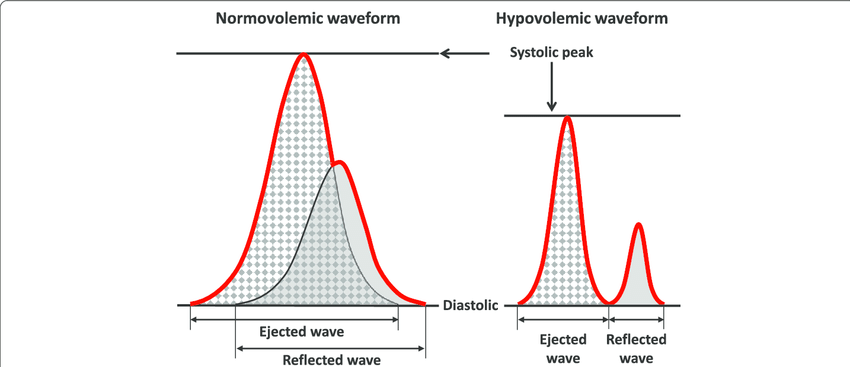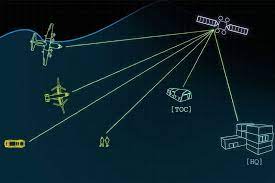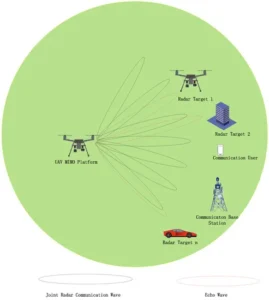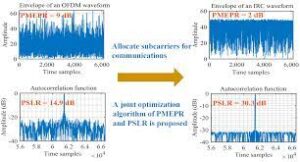
This paper makes the following contributions:
(1) Building upon the integrated waveform concept of a single antenna, the paper constructs an integrated orthogonal waveform set for MIMO scenarios by utilizing the orthogonal spreading code technique.
(2) The paper analyzes the radar detection performance and communication performance of the orthogonal waveforms in the integrated MIMO system within the UAV scenario. Mathematical expressions are derived to describe these performance metrics.
(3) Simulation experiments are conducted to evaluate the performance of the orthogonal waveforms. The results validate that the integrated system exhibits superior radar and communication performance.
The integration of radar and communication systems offers mutual benefits and holds great potential for various future applications. In the context of vehicles-to-vehicle scenarios, the joint radar communication system plays a crucial role in environment recognition, vehicle position tracking, speed monitoring, and detecting abnormal events on the road. Real-time monitoring of traffic flow using the integrated radar communication system enables efficient coordination of people, vehicles, and road infrastructure, ensuring traffic safety and enhancing the overall operational efficiency of the transportation system.
In the domain of smart homes, the integration of radar and communication technology enables the use of Wi-Fi signals to detect human movements and behaviors. This information can be leveraged by smart home systems to provide advanced functionalities and enhance the overall user experience. Source: https://www.mdpi.com/2078-2489/14/8/455
The structure of this paper is organized as follows:
- The first part addresses the challenging problem of constructing an orthogonal waveform set in the MIMO UAV scenario.
- The second part presents the proposed model for orthogonal integrated waveforms specifically designed for UAV scenarios.
- The third part analyzes the radar performance and communication performance of the integrated waveform system.
- The fourth part validates the performance of the MIMO waveform through experimental simulations, including the evaluation of ambiguity function, azimuth-range mapping, and spectral characteristics.
The integrated waveform, a proposed improvement to the UHF SATCOM DAMA standards
The Joint UHF MILSATCOM Technical Working Group (TWG) is currently working on the development of a single integrated waveform that aims to provide a significant improvement over the existing demand-assigned multiple access (DAMA) waveforms. This paper highlights the key features and benefits of the waveform being developed and puts forward several suggestions for enhancing the waveform, which the authors believe should be considered by the TWG.
The suggested improvements encompass various aspects of the waveform. Firstly, an alternative approach to the data structures for control channel orderwire bursts is proposed. Additionally, protocol enhancements are recommended to address slot-conflict issues for half-duplex terminals and enable operation across multiple satellites in the same coverage area. The paper also suggests more effective methods for satellite range determination and reducing network overhead by incorporating terminal status within ranging bursts sent by terminals.
The integrated waveform (IW) builds upon the slave channel concept introduced by MIL-STD-188-183A. It achieves this by transmitting forward orderwire (FOW) bursts on selected control channels, while user communication can be allocated to any available satellite channel. By eliminating the predefined time-slot frame formats used in MIL-STD-188-183 and leveraging the multi-h continuous phase modulation (CPM) developed for MIL-STD-188-181B, the IW has the potential to more than double the number of circuits that the existing satellite constellation can support.
Improving satellite bandwidth utilization by applying combinatorial optimization to the Integrated Waveform (DAMA UHF SATCOM)
The integrated waveform, known as DAMA UHF SATCOM, is defined in MIL-STD-188-181C/182B/183B/185A. Its purpose is to enhance satellite bandwidth utilization compared to legacy SATCOM waveforms by implementing a TDMA communication system.
One of the limitations of the previous version, MIL-STD-188-183A, was the static definition of user communication (UCOM) services. To address this, MIL-STD-188-183B introduced increased flexibility in assigning services within a frame. However, this flexibility resulted in a higher likelihood of fragmented service layouts both within channels and across channels as terminals requested the allocation, relocation, and deallocation of UCOM services.
To mitigate this fragmentation issue, the integrated waveform incorporates an innovative service update feature. This feature allows the network management system (NMS) of the integrated waveform to defragment the service layout across all satellite channels under its control. By doing so, the NMS can create larger contiguous regions of unallocated channel space, which can then be utilized to accommodate current and future service allocation requests.
Reducing terminal slot contention by applying set theory to the integrated waveform (DAMA UHF SATCOM)
The Integrated Waveform (DAMA UHF SATCOM), as defined in MIL-STD-188-181C/182B/183B/185A, is designed to enhance satellite bandwidth utilization compared to conventional SATCOM waveforms through the use of a TDMA communication system.
To address the limitations of statically defined user communications (UCOM) services in MIL-STD-188-183A, MIL-STD-188-183B introduced the flexibility to assign services almost anywhere within a frame. While this flexibility has the potential to greatly improve bandwidth utilization, it can be limited by terminal slot contention, particularly for half-duplex terminals. The benefits of the flexible service assignment feature may be diminished as a result.
However, the IW Network Management System can mitigate the impact of terminal slot contention by efficiently allocating and relocating Downlink and Uplink support services. By strategically assigning UCOM services wherever necessary, the system can achieve optimal satellite channel utilization while minimizing the performance impact due to slot contention.
This paper focuses on the application of set theory to the allocation of Downlink and Uplink support services within a TDMA communications system. By leveraging set theory principles, the aim is to reduce the impact of slot contention and improve the overall utilization of satellite bandwidth.
Multiple layered method of terminal slot contention resolution for the Integrated Waveform (DAMA UHF SATCOM)
The Integrated Waveform, specified in MIL-STD-188-181C/182B/183B/185A, implements a TDMA communication system to improve satellite bandwidth utilization compared to conventional SATCOM waveforms.
To address the limitations of statically defined user communications (UCOM) services in MIL-STD-188-183A, MIL-STD-188-183B introduced the flexibility to assign services anywhere within a frame. While this flexibility can enhance satellite bandwidth utilization, it also introduces complexities related to slot contention.
To mitigate the increase in slot contention, the IW Network Management System employs a technique that allows the allocation of multiple Uplink and Downlink support services. This approach accommodates the diverse placements of UCOM services. However, a downside of this technique is that it transfers the responsibility of detecting and resolving slot contention between the desired UCOM services and the services crucial for Uplink and Downlink acquisition to the terminal systems.








